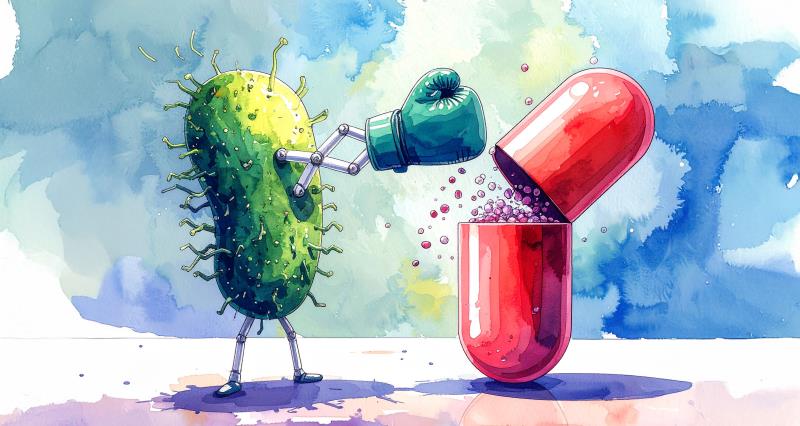
Antimicrobial resistance (AMR), particularly carbapenem-resistant Gram-negative bacteria (CR-GNB), continues to accelerate across Hong Kong, according to Reducing bacterial resistance with IMPACT (Interhospital Multi-disciplinary Programme on Antimicrobial ChemoTherapy), 6th edition, Hong Kong, published in 2025. This update provides new surveillance data and local clinical recommendations, and underscores the critical need for robust stewardship as CR-GNB infections emerge as a major threat to patient care.
Five-fold rise in CPEs
In Hong Kong, methicillin-resistant Staphylococcus aureus (MRSA), extended-spectrum β-lactamase (ESBL)–producing Escherichia coli and Klebsiella spp., and carbapenem-resistant Acinetobacter spp. are the most common multidrug-resistant organisms. CR-GNB, specifically carbapenemase-producing Enterobacterales (CPE), emerged during the COVID-19 pandemic. [https://www.chp.gov.hk/files/pdf/reducing_bacterial_resistance_with_impact.pdf]
Carbapenem resistance in E. coli, almost undetectable in 2009, rose to above 0.5 percent in blood specimens and exceeded 0.75 percent in nonblood specimens in 2023. For Klebsiella spp., after an initially downward trend from 2012 to 2014, carbapenem nonsusceptibility rates increased from about 1.0 percent in 2017 to above 2.0 percent in blood specimens and almost 1.75 percent in nonblood specimens by 2023.
IMPACT surveillance data also show a five-fold increase in CPE isolates sent to the Public Health Laboratory Services Branch for confirmation between 2019 and 2023, from 1,868 to 9,896 cases. New Delhi metallo-β-lactamase (NDM) now dominates the CPE resistance landscape, accounting for 76.4 percent of all CPE isolates, principally in E. coli and Klebsiella spp. These bacteria ranked among the top three most frequently isolated bacteria in both intensive care units (ICUs) and other hospital units in 2023.
Causes of Hong Kong’s AMR surge
IMPACT identifies multiple contributors to rising AMR:
- Hospital factors, including overcrowding, staff shortages, infection control lapses, antibiotic misuse, environmental contamination, and lack of transparency in reporting surveillance data;
- Community issues such as antimicrobial misuse and poor hygiene;
- Infection control disruption and increased antibiotic use during the COVID-19 pandemic. [https://www.chp.gov.hk/files/pdf/reducing_bacterial_resistance_with_impact.pdf; Emerg Microbes Infect 2015;4:e8; Hong Kong Med J 2021;27:396-398; Infect Prev Pract 2023;5:100286]
In particular, the COVID-19 pandemic was associated with increased rates of MRSA, vancomycin-resistant enterococci (VRE), and carbapenem-resistant Acinetobacter baumannii and Enterobacterales during this period. [J Infect Public Health 2023;16:320-331] VRE re-emerged in Hong Kong in 2021–2023 after the epidemic in 2013–2014. [https://www.chp.gov.hk/files/pdf/reducing_bacterial_resistance_with_impact.pdf]
ICU impact
The rise in CR-GNB infections is particularly devastating in ICUs, where limited treatment options contribute to high rates of clinical failure, morbidity, and mortality. Delayed or inappropriate therapy can rapidly lead to severe, life-threatening illness. Therefore, early identification of AMR and timely initiation of effective antibiotics are essential to improving survival rates and easing strain on the healthcare system. [Front Public Health 2024;12:1376513]
Future directions
Encouragingly, efforts by Hong Kong’s medical community have reduced the use of the WHO’s “Watch” group antibiotics — those with a higher risk of promoting resistance — from 40.3 percent in 2016 to 34.6 percent in 2024. [Hong Kong Med J 2025:doi:10.12809/hkmj255183]
Moving forward, it remains critical for doctors in all sectors to prescribe antibiotics only when clinically indicated, to select appropriate agents in line with IMPACT, and to use narrow-spectrum antibiotics at the correct dose and for the shortest effective duration. These ongoing stewardship practices are essential to safeguarding antibiotic efficacy for future generations. [https://www.chp.gov.hk/files/pdf/reducing_bacterial_resistance_with_impact.pdf]